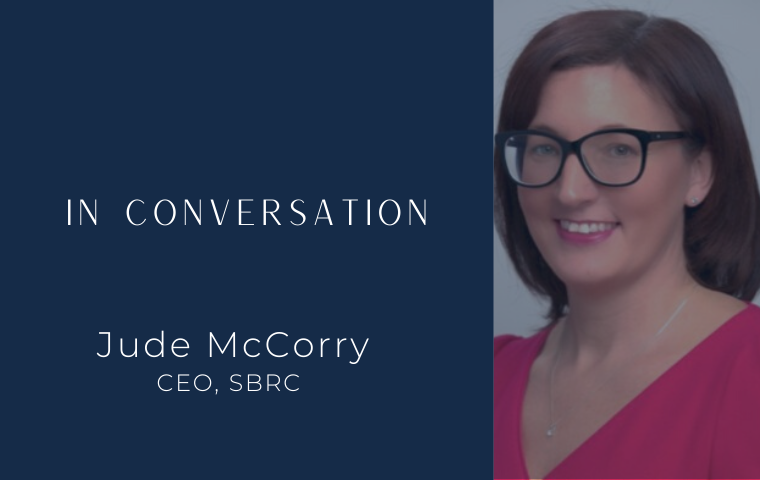Induction During Lockdown
29th April 2020
First days are tough at the best of times. There's the anticipation of starting a new job mingled with the slight apprehension of not knowing where anything is, who people are and how to get things done in this new workplace.
But what if there is no workplace to go to? That's the experience of many new recruits during the Coronavirus crisis.
With remote working set to become much more commonplace it is an increasingly likely scenario for future new start employees.
Your induction (or onboarding) programme is the fast track to trust and engagement if it creates the best impression on a new recruit and sets the expectation for future behaviours. It carries even more significance at this time, when the emphasis is on home / remote working with minimal supervision.
Communicate Earlier, Communicate More
Reassure, reassure, reassure. This is the time to reassure the candidate by regularly keeping in touch, it is also a great way to enhance your employer brand. Take these opportunities to check that the candidate has received their offer letter, understands the offer, knows where to return supporting employment document and when their equipment will be arriving. It is also a great chance for you to keep updated on progress from their perspective, such as providing notice at their previous employer.
Andrew Buchan started his new job at the outset of the Coronavirus crisis: "Having a designated point of contact ahead of starting meant there was continual communication during a time of great uncertainty. It also ensured my queries were responded to quickly and appropriately and made a great impression on me personally, that I was joining a business that was effective and responsive".
Equipment
How demoralising is it to turn up for work on Day 1 and your work station isn't ready? You feel like an oversight, right?
Equipment should be delivered to the new employee's home with all the required software configured for use. Clear set up instructions, logins and a tech support point of contact should be included along with some really clear instructions about what to do on Day 1 – the priority being how to log in to the Induction Call!
By the very nature of a home office, the employee may need some additional kit, an extra monitor or an ergonomic chair perhaps. Do remember to keep a fixed asset register to track hardware and any additional items. Think about wider issues like stationery or employee access to the package delivery system too.
Make Induction Fit For Purpose
In a future blog we'll cover the key elements of a great induction, but for now consider how fit for purpose your induction process is. A remote worker will probably be calling in to a virtual meeting through a video tool such as Zoom (others are available!). Consider how long each learning session should be and what are your plans for interactive breaks during the training? Sessions should:
- Have content that is engaging and educational. This takes time and effort so plan well ahead to ensure you have meaningful sessions and that the tech works seamlessly. If you already have a comprehensive induction, this should be relatively simple to replicate online.
- Be designed with contributions from at least HR, marketing and line managers, but the nature of your business may mean that there's also a useful slot for a leader to share the business story or a recent recruit to share their experience of Life at Company X. It takes collaboration.
- Involve interaction between the presenters and new starts to encourage participation throughout.
- Prioritise several Day 1 sessions but then maintain continuity with fewer supporting sessions during the first week. This will provide opportunities for the new recruit to ask questions or seek clarifications as they become more familiar with the business.
- Get personal and ask the new employee for a virtual tour of their home working space – ask them to show you their office, after all you will have completed a tour of your office – won't you?
Keen to introduce himself to the entire team on his first day, Andrew proactively sent out a biography that included some personal information. "I just wanted people to know a little bit about me. I was delighted when several people responded in kind. It wasn't a planned activity but has worked as a great ice-breaker."
"To help you integrate it's good if you take initiative and arrange to meet people and get to know them and their work. I'm naturally a very sociable person and this approach meant that I get to know people more quickly, that's particularly important for me."
Get Personal – Make Real Introductions
Receiving a copy of the company organogram or being asked to visit the Team Pages on the intranet is fine for a background overview but it falls short on relationship building. It is vital that introductions to relevant people are made part of the induction process. We like the idea of meeting over video (remember seeing faces is so important):
- The previous incumbent for a handover discussion.
- The line manager and relevant project team leaders.
- A buddy, someone with a lot of experience of the business but who is also a good personality match.
- Team members for informal introductions and structured business meetings.
Andrew continues, "I'm now scheduling one to one video calls with as many people as I can across the company. These may not necessarily be work related but they will help me get to know everyone, understand what roles people have, who is the designated point of contact for things that might crop up in the future and I get the chance to explain what my contribution is."
"I'm settling in quickly and already feel part of the team, despite never having met anyone in person or spending any time in the business office."
Involve an element of social for everyone too.
Jude Thorpe explains how TMM Recruitment is bringing the team back together during lockdown "Twice a week we have group social Zoom calls, each one has a different theme. One is a simple "coffee and catch up" chat but the other always happens on a Friday immediately after work and is called "Cupboard Cocktails", this call centres around a quiz, which we can make a little competitive thanks to the Zoom Rooms feature. These social events are complemented with 1:1 calls and a weekly all employee business update meeting.
Set Expectations
Arguably, one of the great things about work is that we feel we have a purpose when making a positive contribution to something we care about. But to do that we have to understand what is expected of us.
Tools such as Trello and Microsoft Teams really facilitate ongoing project communication but induction is the time to set expectations and outcomes on a 1:1 basis.
You may have seen on social media the clever avatars software engineers have designed of themselves as "Zoom call standins" because their real selves have conference call fatigue.
The potential for living life on Zoom when remote working is one of the reasons why meetings should focus on Agreement points and Action points. By determining to reach agreement and what to action video calls become shorter and more constructive than many non-virtual (real) meetings.
Taking all these points into practice will help to accelerate the rate at which your new employee feels part of the team without overwhelming them, giving them the resources they need to get on with the job you hired them for.









